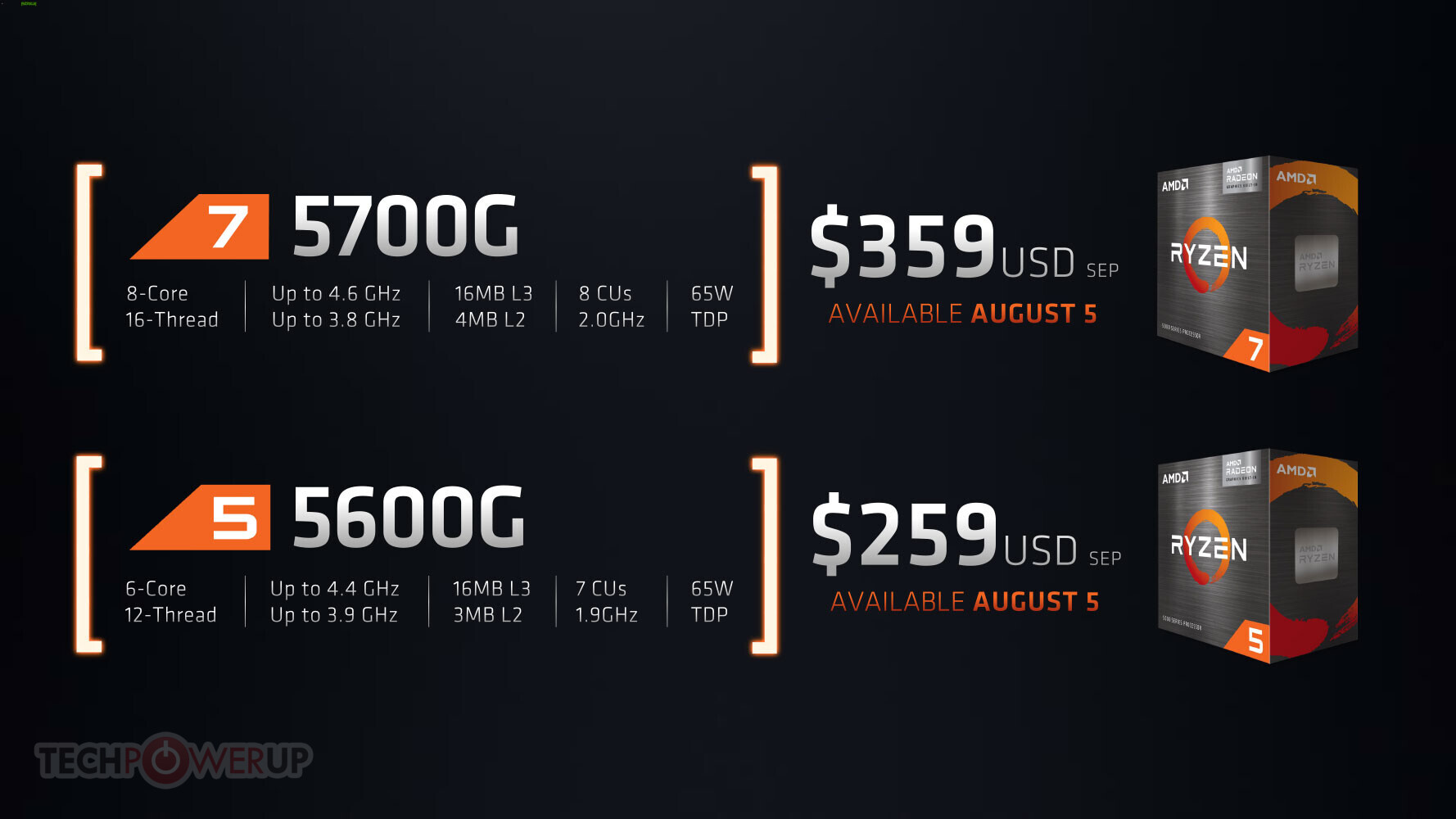Caporegime
- Joined
- 9 Nov 2009
- Posts
- 25,341
- Location
- Planet Earth
They are price at $359 and $259:
https://www.techpowerup.com/282800/amd-announces-ryzen-5000g-and-pro-5000g-desktop-processors

So it should work out at approximately £300 and £220,if you include VAT and current exchange rates. Changes over the CPUs include a reduction in L3 cache to 16MB abd 24 PCI-E 3.0 lanes instead of 24 PCI-E 4.0 lanes. Essentially these are the Ryzen 7 5700X and Ryzen 5 5600 non-X in the range for now.
The Ryzen 5 5600G has been compared against the Ryzen 5 5600X by UFD Tech recently:
https://www.youtube.com/watch?v=ReN06Kw4y4I
In most games tested it was between 10% slower to a few precent faster than the Ryzen 5 5600X. However,in the single MOBA tested(Valorant) it was around 50% slower.
https://www.techpowerup.com/282800/amd-announces-ryzen-5000g-and-pro-5000g-desktop-processors

So it should work out at approximately £300 and £220,if you include VAT and current exchange rates. Changes over the CPUs include a reduction in L3 cache to 16MB abd 24 PCI-E 3.0 lanes instead of 24 PCI-E 4.0 lanes. Essentially these are the Ryzen 7 5700X and Ryzen 5 5600 non-X in the range for now.
The Ryzen 5 5600G has been compared against the Ryzen 5 5600X by UFD Tech recently:
https://www.youtube.com/watch?v=ReN06Kw4y4I
In most games tested it was between 10% slower to a few precent faster than the Ryzen 5 5600X. However,in the single MOBA tested(Valorant) it was around 50% slower.

